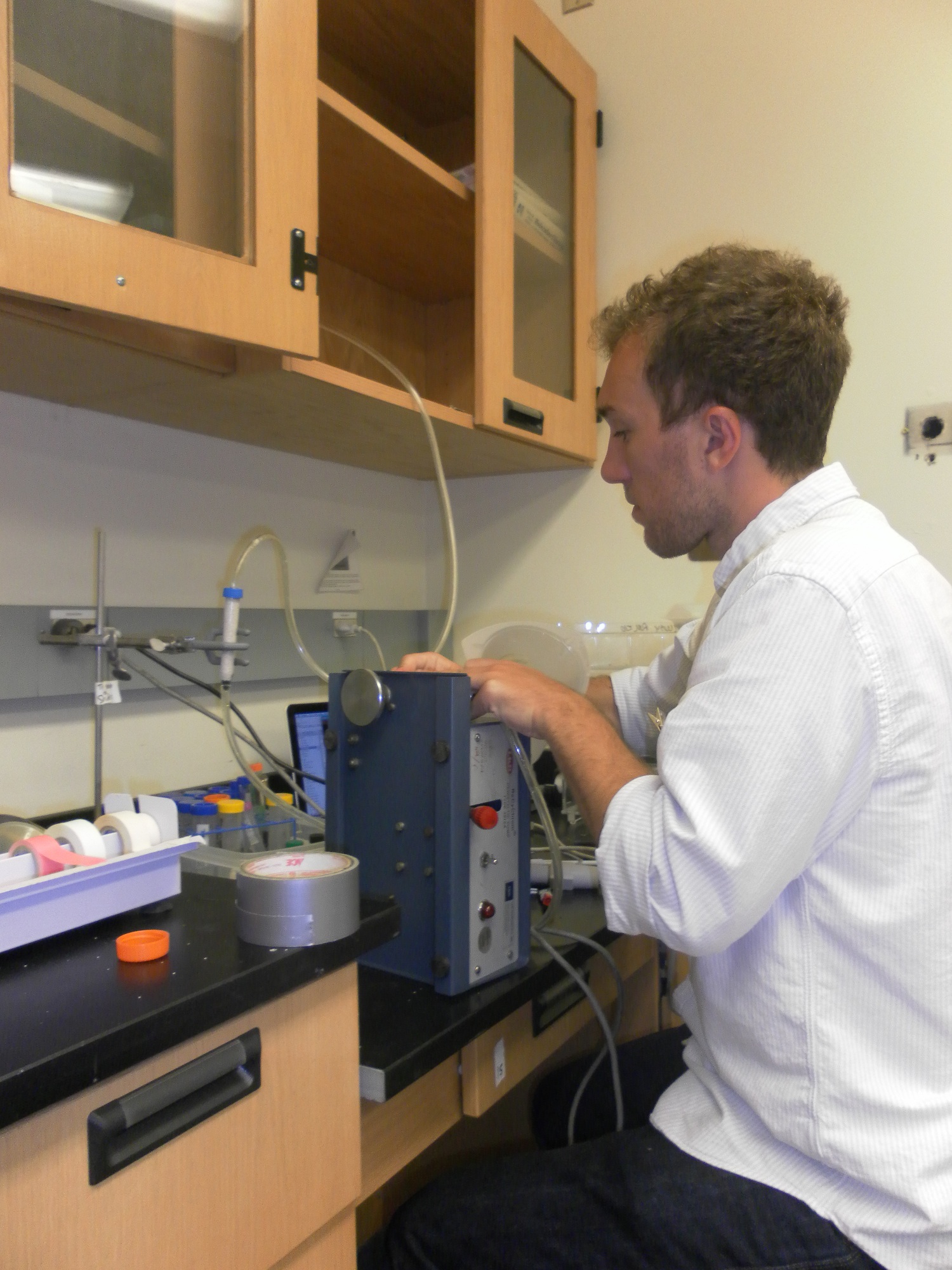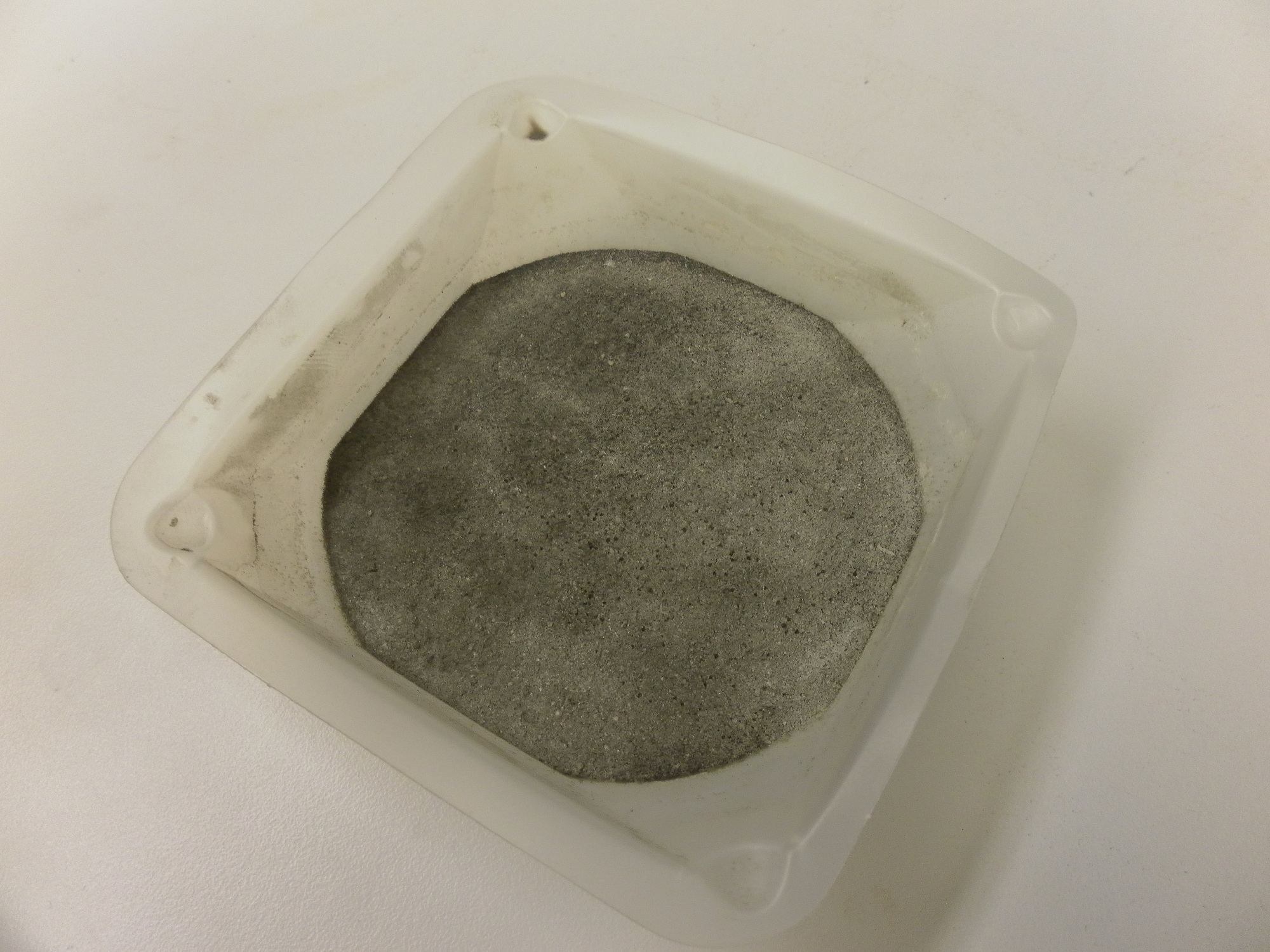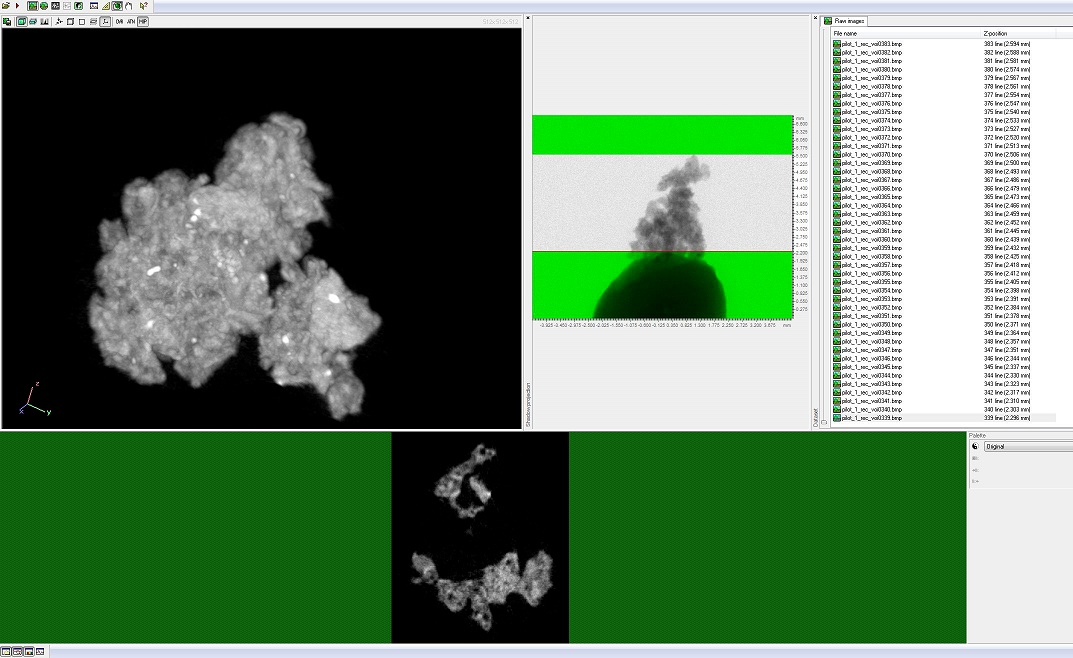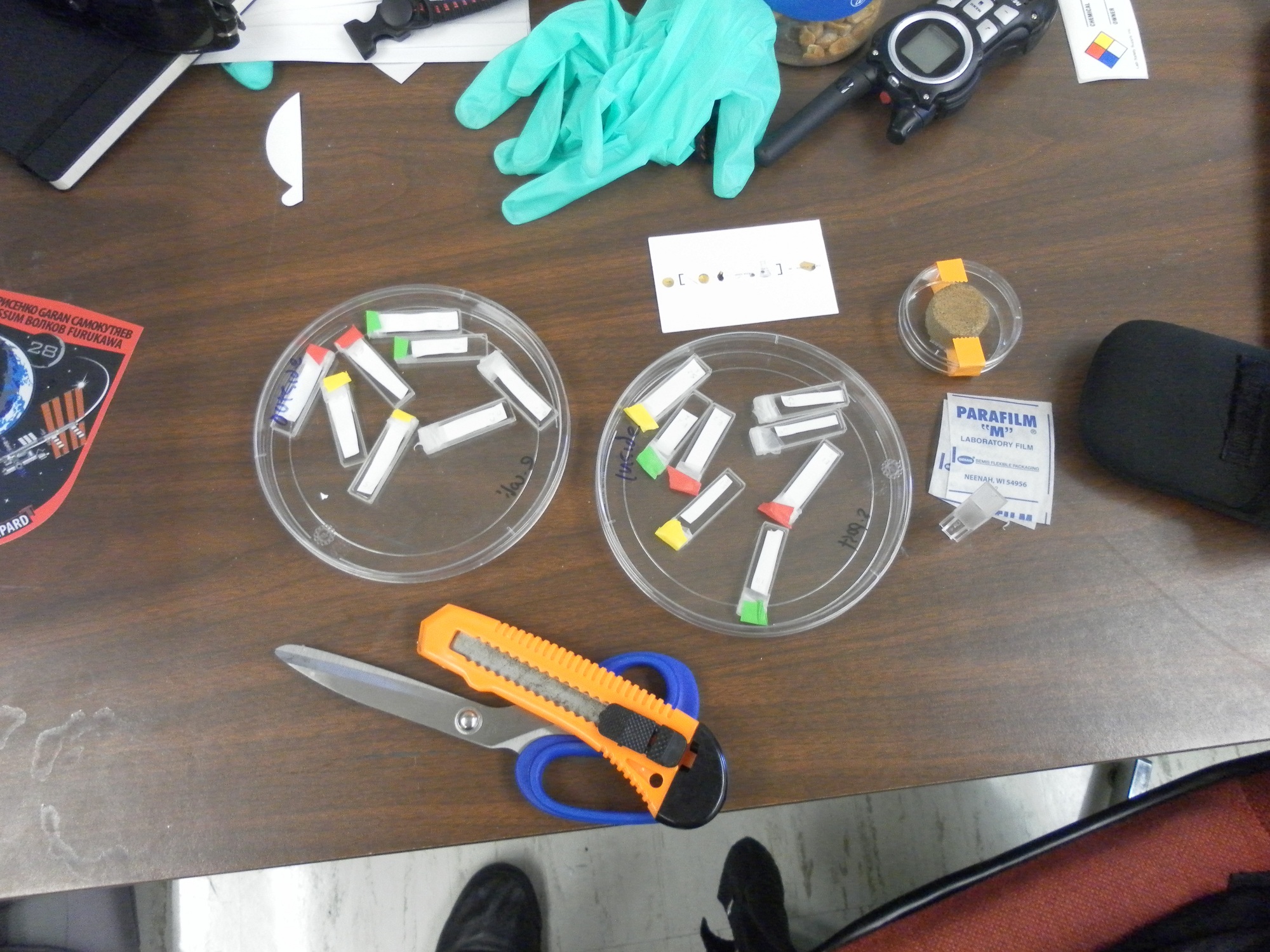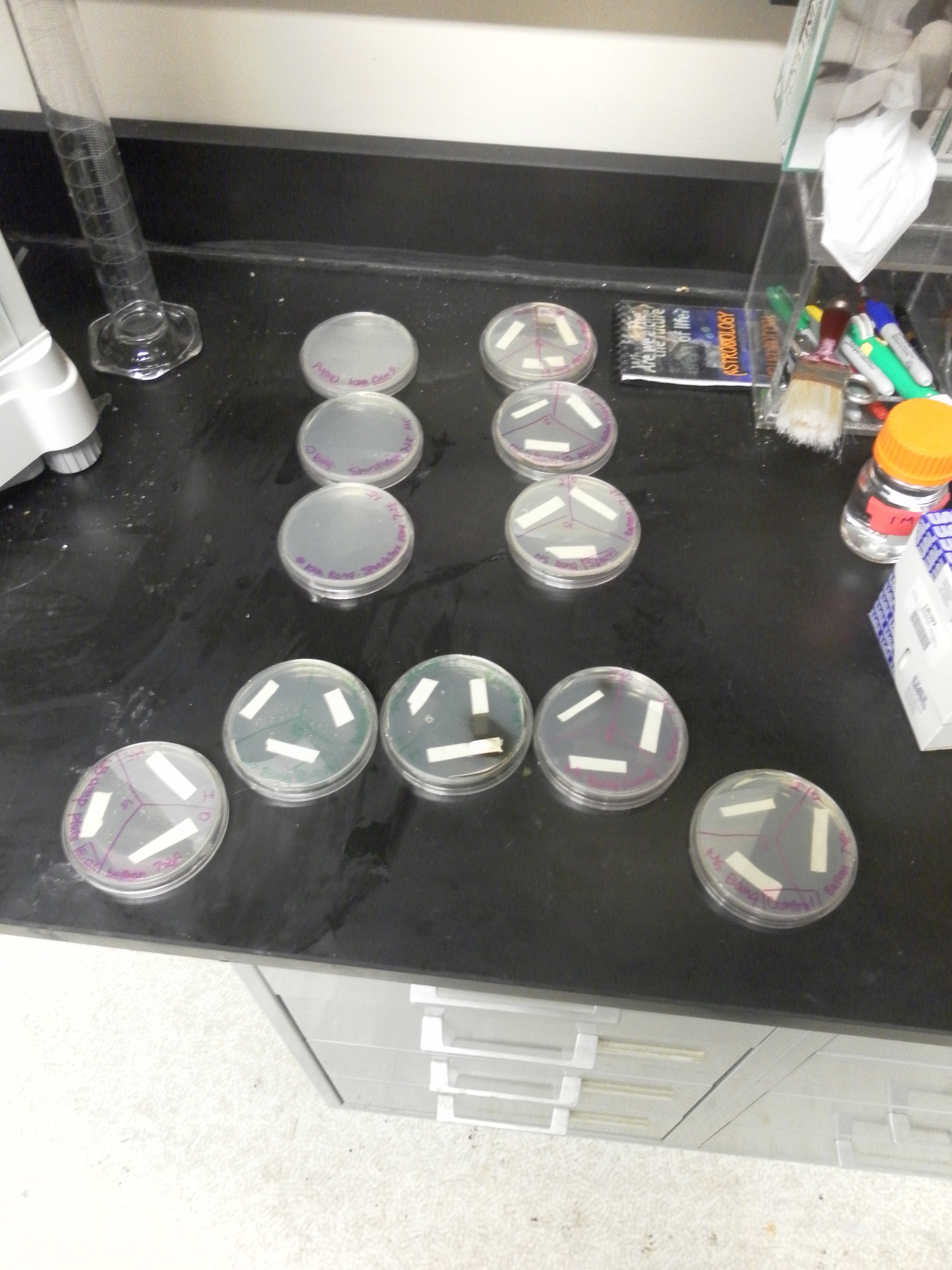Team:Brown-Stanford/REGObricks/Balloon
From 2011.igem.org
| Line 21: | Line 21: | ||
===='''The Sand Column'''==== | ===='''The Sand Column'''==== | ||
| - | We attempted to create a macroscopic demonstration of biocementation. Upon learning that the biocementation process was of sufficient value and difficulty to warrant two separate patent applications for elucidating the process, we tried to separately elucidate the process for iGEM’s open resource community. Following the guidance of several research articles, we built several cementation columns. Materials and procedures can be found '''[ | + | We attempted to create a macroscopic demonstration of biocementation. Upon learning that the biocementation process was of sufficient value and difficulty to warrant two separate patent applications for elucidating the process, we tried to separately elucidate the process for iGEM’s open resource community. Following the guidance of several research articles, we built several cementation columns. Materials and procedures can be found '''[https://2011.igem.org/Team:Brown-Stanford/Lab/Protocols/CementationColumn here]''' |
[[File:Brown-Stanford-Columngetup.JPG|thumb|200px|Setup of Cementation Column]] | [[File:Brown-Stanford-Columngetup.JPG|thumb|200px|Setup of Cementation Column]] | ||
Unfortunately, construction of a flow-through cementation column was unsuccessful, though we did manage to create surface-layer biocementation on petri dishes. Cementation after 5 days proved sufficiently stiffened enough to resist a scalpel. Disappointment aside, we learned that it had taken the researchers over six years to master the process, and that we went against high odds to replicate it in three months. | Unfortunately, construction of a flow-through cementation column was unsuccessful, though we did manage to create surface-layer biocementation on petri dishes. Cementation after 5 days proved sufficiently stiffened enough to resist a scalpel. Disappointment aside, we learned that it had taken the researchers over six years to master the process, and that we went against high odds to replicate it in three months. | ||
| - | |||
[[File:Brown-Stanford-Moonghettobrick.JPG|300px|thumb|Two Dimensional Cementation of Lunar Regolith Simulant]] | [[File:Brown-Stanford-Moonghettobrick.JPG|300px|thumb|Two Dimensional Cementation of Lunar Regolith Simulant]] | ||
| - | As compensation for our plight, one of the visiting researchers with a pending patent allowed us fly one of the real cemented bricks in our weather-balloon trip to the edge of the world | + | As compensation for our plight, one of the visiting researchers with a pending patent for biocementation allowed us fly one of the real cemented bricks in our weather-balloon trip to the edge of the world to see how the drastic reductions in temperature and pressure will affect the brick and bacteria. |
| - | + | ||
[[File:Brown-Stanford-Flyingbrick.JPG|300px|thumb|Preflight CT Scan of Biocemented Brick]] | [[File:Brown-Stanford-Flyingbrick.JPG|300px|thumb|Preflight CT Scan of Biocemented Brick]] | ||
| Line 38: | Line 36: | ||
| - | Working at NASA Ames, we had the good fortune of meeting Jack Cackler, who was trying to prototype small balloon launches to the stratosphere. Located at 10 to 50 kilometers above the ground, the stratosphere has conditions that are out of this world: a temperature range of -56 to - | + | Working at NASA Ames, we had the good fortune of meeting Jack Cackler, who was trying to prototype small balloon launches to the stratosphere. Located at 10 to 50 kilometers above the ground, the stratosphere has conditions that are out of this world: a temperature range of -56 to -3°C (it actually increases as you ascend, from chemical synthesis of ), and atmosphere 0.001 percent of that of earth’s sea level. |
| - | To take advantage of this rare opportunity, we prepared two dried samples of S. pasteurii to be sent up in the balloon, to test the ability of the bacteria to withstand the extremes in temperature, depressurization and radiation bombardment. | + | To take advantage of this rare opportunity, we prepared two dried samples of ''S. pasteurii'' to be sent up in the balloon, to test the ability of the bacteria to withstand the extremes in temperature, depressurization and radiation bombardment. Note that the microbes we flew were <b>not</b> genetically altered. |
[[File:Brown-Stanford-flightmaterials.JPG|300px|thumb|Materials for the Stratospheric Balloon Flight]] | [[File:Brown-Stanford-flightmaterials.JPG|300px|thumb|Materials for the Stratospheric Balloon Flight]] | ||
| - | Thorough Protocols for the preparation can be found | + | Thorough Protocols for the preparation can be found [https://2011.igem.org/Team:Brown-Stanford/Lab/Protocols/BalloonFlight#Preparation_of_Samples_for_Balloon_Flight: here] |
| - | + | ||
[[File:Brown-Stanford-Earthstratosphere.JPG|300px|thumb|Overlooking the Curvature of the Earth]] | [[File:Brown-Stanford-Earthstratosphere.JPG|300px|thumb|Overlooking the Curvature of the Earth]] | ||
Our balloon went up to 80,000 ft (24 kilometers), from which the curvature of the earth was visible. | Our balloon went up to 80,000 ft (24 kilometers), from which the curvature of the earth was visible. | ||
| - | |||
[[File:Brown-Stanford-bacteriaafterflight.JPG|300px|thumb|Qualitative Survival Analysis after Balloon Flight]] | [[File:Brown-Stanford-bacteriaafterflight.JPG|300px|thumb|Qualitative Survival Analysis after Balloon Flight]] | ||
[[File:Brown-Stanford-bacteriaafterflight2.JPG|300px|thumb|Qualitative Survival Analysis after Balloon Flight]] | [[File:Brown-Stanford-bacteriaafterflight2.JPG|300px|thumb|Qualitative Survival Analysis after Balloon Flight]] | ||
| - | Unfortunately, our S. pasteurii cargo, as well as all other cargo, did not survive the first flight. | + | Unfortunately, our ''S. pasteurii'' cargo, as well as all other cargo, did not survive the first flight. |
| - | During our second flight (accompanied by the '''[ | + | During our second flight (accompanied by the '''[https://2011.igem.org/Team:Brown-Stanford/BBC BBC]''' ), we prepared the ''S. pasteurii'' inside [http://www.enasco.com/c/whirlpak/Whirl-Pak%26%23174%3B+Bags/ Whirlpak bags]. Surprisingly enough, upon retrieval, the the samples inside the Whirlpak bags exhibited urease activity! The ones outside the bags did not, though mysteriously enough both samples grew back on Bang media plates in seemingly equal quantities. Further experimentation must be done to ascertain the exact nature of the survival. |
| - | Our original grand plan was to have one final balloon flight, after our transformation of S. pasteurii with Newcastle 2009’s sporulation regulation gene, to see if induced sporulation could have increase the percentage of survivors. Unfortunately, difficulties in transforming S. pasteurii put this this plan on | + | Our original grand plan was to have one final balloon flight, after our transformation of ''S. pasteurii'' with Newcastle 2009’s sporulation regulation gene, to see if induced sporulation could have increase the percentage of survivors. Unfortunately, difficulties in transforming ''S. pasteurii'' put this this plan on hold. |
Revision as of 14:06, 28 September 2011
Balloon Flights
The Sand Column
We attempted to create a macroscopic demonstration of biocementation. Upon learning that the biocementation process was of sufficient value and difficulty to warrant two separate patent applications for elucidating the process, we tried to separately elucidate the process for iGEM’s open resource community. Following the guidance of several research articles, we built several cementation columns. Materials and procedures can be found here
Unfortunately, construction of a flow-through cementation column was unsuccessful, though we did manage to create surface-layer biocementation on petri dishes. Cementation after 5 days proved sufficiently stiffened enough to resist a scalpel. Disappointment aside, we learned that it had taken the researchers over six years to master the process, and that we went against high odds to replicate it in three months.
As compensation for our plight, one of the visiting researchers with a pending patent for biocementation allowed us fly one of the real cemented bricks in our weather-balloon trip to the edge of the world to see how the drastic reductions in temperature and pressure will affect the brick and bacteria.
Survival in Extremophile conditions- Balloon Launches
Working at NASA Ames, we had the good fortune of meeting Jack Cackler, who was trying to prototype small balloon launches to the stratosphere. Located at 10 to 50 kilometers above the ground, the stratosphere has conditions that are out of this world: a temperature range of -56 to -3°C (it actually increases as you ascend, from chemical synthesis of ), and atmosphere 0.001 percent of that of earth’s sea level. To take advantage of this rare opportunity, we prepared two dried samples of S. pasteurii to be sent up in the balloon, to test the ability of the bacteria to withstand the extremes in temperature, depressurization and radiation bombardment. Note that the microbes we flew were not genetically altered.
Thorough Protocols for the preparation can be found here
Our balloon went up to 80,000 ft (24 kilometers), from which the curvature of the earth was visible.
Unfortunately, our S. pasteurii cargo, as well as all other cargo, did not survive the first flight. During our second flight (accompanied by the BBC ), we prepared the S. pasteurii inside Whirlpak bags. Surprisingly enough, upon retrieval, the the samples inside the Whirlpak bags exhibited urease activity! The ones outside the bags did not, though mysteriously enough both samples grew back on Bang media plates in seemingly equal quantities. Further experimentation must be done to ascertain the exact nature of the survival.
Our original grand plan was to have one final balloon flight, after our transformation of S. pasteurii with Newcastle 2009’s sporulation regulation gene, to see if induced sporulation could have increase the percentage of survivors. Unfortunately, difficulties in transforming S. pasteurii put this this plan on hold.
 "
"








